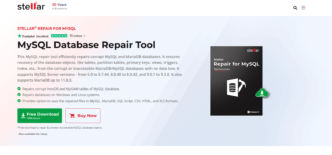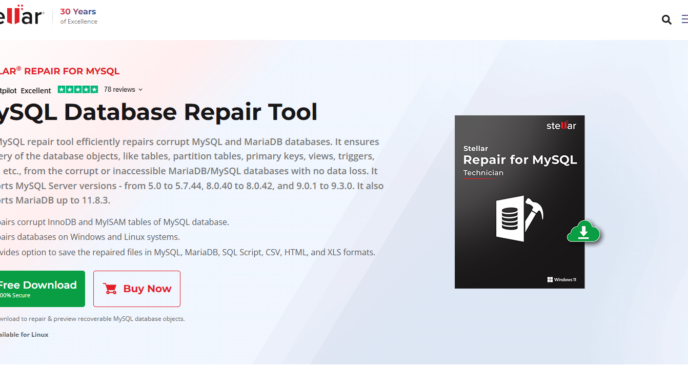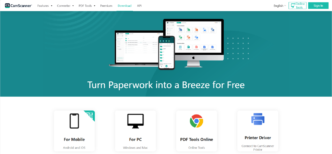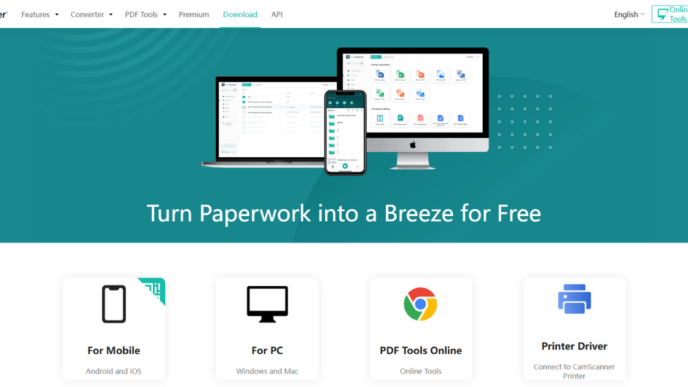Understanding The Gartner Magic Quadrant For Enterprise Low-Code Application Platforms
So, you’re looking into low-code platforms for your business, huh? It can feel like a jungle out there with so many options. That’s where Gartner’s Magic Quadrant for Enterprise Low-Code Application Platforms comes in. Think of it as a map that helps you figure out who’s who in this space. It’s published annually, and it’s a big deal for anyone trying to speed up how they build software.
Defining Enterprise Low-Code Application Platforms
Basically, Gartner defines low-code application platforms (LCAPs) as tools that let you build apps faster by using visual interfaces and pre-built components instead of writing tons of code. Enterprise LCAPs are specifically designed for bigger companies, offering more robust features for serious development and ongoing maintenance. They’re not just for hobbyists; they’re for professional developers and teams working on complex projects.
Key Criteria For LCAP Evaluation
Gartner looks at a lot of things when they put together this report. To even be considered, a platform needs to let you build a full application – think user interfaces, business logic, and data storage – using visual tools and some scripting. It also has to be able to run the apps you build.
Here are some of the must-haves:
- Full Development Lifecycle Support: This means the platform helps with everything from initial development to deployment, monitoring, and managing the app over time. It needs good governance controls.
- Collaboration Features: When multiple developers are working on the same project, the platform needs to handle that smoothly, letting them work together without stepping on each other’s toes.
- Integration Capabilities: It should connect easily with other business systems and databases you already use. Plus, the ability to create your own connections is a big plus.
- Testing Tools: Built-in testing or the ability to hook up with external testing software is important for making sure apps work right.
Some other things Gartner considers, though not strictly required, include support for modern tech like event-driven architectures, AI-assisted development, and advanced data services.
The Four Quadrants Explained
The Magic Quadrant itself is a chart with four sections: Leaders, Challengers, Visionaries, and Niche Players. It plots vendors based on two main things: their ability to execute (how well they’re doing now) and their completeness of vision (how well they’re positioned for the future).
- Leaders: These are the companies doing great right now and have a clear plan for where they’re going. They’re usually the ones you hear about most.
- Challengers: They’re strong performers today but might not have as clear a vision for the future as the Leaders.
- Visionaries: These companies have a forward-thinking approach and are doing innovative things, but they might not be executing as strongly in the market just yet.
- Niche Players: They focus on a specific segment or do a few things really well, but they don’t cover the whole market like the Leaders do.
Leaders In The 2025 Gartner Magic Quadrant For Enterprise Low-Code Application Platforms
This year’s Gartner Magic Quadrant for Enterprise Low-Code Application Platforms (LCAP) highlights a few key players who consistently show up in the Leaders quadrant. These are the platforms that Gartner sees as having both a strong vision for the future and the current ability to execute on that vision. If your organization is looking to build custom applications quickly without getting bogged down in complex coding, these are the vendors you’ll want to pay close attention to.
Microsoft Power Apps: A Comprehensive Ecosystem
Microsoft Power Apps continues to be a major force in the LCAP space. It’s part of the larger Microsoft Power Platform, which means it plays nicely with other Microsoft tools like Dynamics 365 and Microsoft 365. This integration is a big deal for businesses already invested in the Microsoft ecosystem. Power Apps is particularly strong for citizen developers, offering a user-friendly interface that makes app creation accessible to a wider range of employees. But don’t let that fool you; it also packs a punch for professional developers with more advanced capabilities. Its vast library of connectors, over 1,000 in fact, allows for easy integration with many common enterprise applications and data sources. Plus, Microsoft’s push into generative AI, with features like AI Copilot, is really shaping how apps are built and managed on the platform.
OutSystems: Driving Innovation and Developer Experience
OutSystems is another name that frequently appears at the top. They’ve really focused on making the developer experience a priority, which is something many professional developers appreciate. They aim to provide a platform that not only speeds up development but also makes it a more enjoyable process. This focus on the developer often translates into more robust and scalable applications. OutSystems is known for its ability to handle complex enterprise needs and offers a good degree of flexibility for custom development. They’re also working on incorporating modern architectural patterns, which is important as businesses look to build more adaptable and future-proof applications.
Mendix: A Consistent Leader in Enterprise Low-Code
Mendix has been a consistent leader in this market for a long time, and for good reason. They were early players in the enterprise low-code space and have continued to innovate. Their platform is designed for building sophisticated enterprise applications, and they have a strong track record of delivering on complex projects. Mendix also boasts a large community and a marketplace with thousands of add-ons, which can significantly speed up development by providing pre-built components and integrations. While their approach might sometimes lean more technical, it reflects a deep commitment to the capabilities needed for serious enterprise development. They’ve also been recognized for their innovation, particularly in areas like data management within their platform.
Challengers And Visionaries In The Low-Code Landscape

Sometimes, the most interesting players aren’t the ones at the very top. In the 2025 Gartner Magic Quadrant for Enterprise Low-Code Application Platforms, the Challengers and Visionaries sections highlight companies doing some really cool things, often with a specific focus that sets them apart. These are the platforms that might not have the broadest market share or the most extensive feature sets across the board, but they offer unique advantages for certain types of projects or organizations.
Zoho Creator: Affordability Meets Versatility
Zoho Creator is a solid choice, especially if you’re watching your budget. It’s known for being quite affordable, which is a big deal when you’re trying to get more done with less. It’s really good at customizing apps you already use within the Zoho ecosystem, but it can also build standalone applications from scratch. Think of it as a flexible tool that can adapt to a lot of different business needs.
Zoho Creator’s strengths really shine in its robust development tools and accessible pricing. They offer graphical designers for processes, data, and user interfaces, and their scripting language, Deluge, is pretty powerful. Plus, they don’t seem to be hiking prices just because low-code is popular, which is refreshing.
However, Zoho Creator sometimes gets overlooked by bigger companies. Their business model is more geared towards small and medium-sized businesses, so large enterprises might need to see more tailored strategies and partnerships to feel fully supported. Also, while they’re improving, their innovation in areas like AI might be more about keeping up than leading the pack right now.
GeneXus By Globant: A Visionary Approach to Development
GeneXus, now part of Globant, is often seen as a visionary. They’re taking a different path, focusing on a more developer-centric approach. This means they’re building tools that professional developers can use to create enterprise-grade applications quickly, often using languages and methods they’re already familiar with. It’s about boosting productivity for those who know how to code, but want to do it faster.
One of the standout features for GeneXus is its strong community. They’ve got a lot of developers, both paying and free users, who help each other out. This active group is a great resource and shows the platform’s appeal. They’ve also managed to secure good funding, which points to their market potential. Their marketing is also quite focused, specifically targeting professional developers who might otherwise shy away from low-code solutions. They’re trying to show these developers that low-code can be powerful and efficient for complex tasks too.
While GeneXus is making strides, it’s important to remember that their focus on professional developers means it might not be the first choice for citizen developers or business users looking for a purely no-code experience. Their strength lies in empowering those with technical backgrounds to build more, faster.
Niche Players And Emerging Trends In Enterprise Low-Code
Sometimes, the big names aren’t the only ones worth looking at. The "Niche Players" quadrant in Gartner’s Magic Quadrant often highlights vendors who might not have the broadest market reach but offer something special for specific needs. These platforms can be fantastic for organizations looking for specialized features or a particular approach to development.
Huawei Astro Zero: Integrated Cloud Ecosystem
Huawei’s Astro Zero is a good example of a platform carving out its own space. It’s built with a dual focus: a no-code side for simpler, information-based apps and a low-code, model-driven system for more complex workflows. What really sets Astro Zero apart is its deep integration with the Huawei Cloud ecosystem. This means developers can tap into services like AI, IoT, and even blockchain directly within the platform. It’s like having a whole suite of advanced tools readily available.
- Integrated Platform: Connects with Huawei Cloud services for AI, IoT, and more.
- Dual Approach: Offers both no-code and low-code development options.
- Product Strategy: Aims to cover a wide range of development needs, from simple to complex.
This tight integration can speed up development significantly, especially for projects that can benefit from these advanced cloud capabilities. It’s a strong play for companies already invested in or considering the Huawei Cloud environment.
Strategic Planning Assumptions for LCAP Adoption
When you’re thinking about bringing a low-code platform into your organization, it’s not just about picking the right vendor. You’ve got to plan ahead. Gartner often includes "Strategic Planning Assumptions" in their reports, which are basically educated guesses about what’s coming next and how it might affect your decisions. For LCAPs, a few key assumptions are shaping the landscape:
- AI-Assisted Development: Expect more platforms to bake in AI features. This could mean AI helping to write code, suggest improvements, or even automate testing. It’s about making development faster and potentially easier, even for less experienced developers.
- Modern Architectures: Low-code platforms are increasingly supporting newer ways of building software, like event-driven systems or microservices. This means you won’t be boxed into older ways of doing things; you can build more flexible and scalable applications.
- Governance and Scalability: As low-code moves from simple apps to more critical enterprise systems, the need for strong governance (rules and controls) and the ability to scale up becomes super important. Platforms that offer robust features in these areas will be more attractive for larger, more complex projects.
Thinking about these trends now can help you choose a platform that won’t just meet your needs today but will also be a good fit for the future. It’s about picking a partner that grows with your digital transformation goals.
Evaluating Strengths And Cautions Of Key Vendors
So, you’ve looked at the big picture, seen who’s leading the pack, and maybe even spotted a few up-and-comers. Now comes the nitty-gritty: really digging into what makes these low-code platforms tick, and where they might stumble. It’s not just about the shiny badges Gartner gives out; it’s about finding the tool that actually fits your team and your projects.
Microsoft Power Apps: Strengths and Challenges
Microsoft’s Power Apps is a big player, and for good reason. It’s deeply integrated into the Microsoft ecosystem, which is a huge plus if your organization is already living in Office 365, Dynamics 365, or Azure. This means a lot of your existing data and user management can just work.
- Strengths:
- Ubiquitous Integration: Connects easily with other Microsoft products, making data sharing and app development smoother for existing users.
- Large Community and Resources: Plenty of online tutorials, forums, and official documentation to help you out when you get stuck.
- Scalability within the Microsoft Cloud: Can grow with your business, especially if you’re already invested in Azure.
- Cautions:
- Licensing Complexity: Understanding the different licensing tiers and what features are included can be a headache. It’s easy to overspend or under-provision.
- Steeper Learning Curve for Advanced Features: While basic apps are quick to build, getting into complex logic or custom connectors can take more time and skill.
- Vendor Lock-in Potential: Deep integration is great, but it can also make it harder to switch away from Microsoft later on.
OutSystems: Strengths and Deployment Options
OutSystems has consistently been a top contender, known for its robust capabilities and focus on professional developers who want to build serious, enterprise-grade applications. They really emphasize the developer experience.
- Strengths:
- Full-Stack Development: Handles everything from the front-end user interface to the back-end logic and database integration.
- Strong Performance and Scalability: Built to handle complex applications that need to perform well under heavy load.
- Visual Development Tools: Offers a rich visual environment that speeds up the creation of sophisticated applications.
- Deployment Options:
- Cloud: OutSystems offers its own cloud hosting, simplifying deployment and management.
- On-Premises: For organizations with strict data residency or security requirements, deploying on your own servers is a solid option.
- Hybrid: You can also mix and match, deploying parts of your application in the cloud and others on-premises.
- Cautions:
- Higher Cost: Generally considered a more premium solution, which can be a barrier for smaller businesses or projects with tight budgets.
- Requires Skilled Developers: While low-code, it’s best suited for teams with some development background to really take advantage of its power.
Zoho Creator: Strengths and Business Model Considerations
Zoho Creator is often highlighted for its affordability and the breadth of its application suite. It’s a good choice for businesses looking for a cost-effective way to digitize workflows and build custom applications without breaking the bank.
- Strengths:
- Cost-Effectiveness: Offers competitive pricing, making it accessible for small to medium-sized businesses.
- Ease of Use for Simple Apps: Quick to get started with building forms, basic workflows, and data management tools.
- Part of the Larger Zoho Ecosystem: Integrates well with other Zoho business applications, creating a connected suite.
- Business Model Considerations:
- Tiered Features: Like many platforms, features and capabilities are often tied to different pricing tiers. You need to check what’s included at each level.
- Focus on SMBs: While capable of more, its sweet spot is often considered the small to medium business market.
- Cautions:
- Scalability for Very Complex Apps: May not be the first choice for highly complex, mission-critical applications requiring extreme performance or intricate integrations compared to some competitors.
- Customization Limits: While flexible, there can be limitations on deep customization compared to platforms geared more towards professional developers.
Navigating The Future Of Enterprise Low-Code Application Platforms
So, where is all this low-code stuff heading? It’s not just about building apps faster anymore. The platforms are getting smarter, and the way we use them is changing too. It feels like we’re on the cusp of some pretty big shifts.
AI-Assisted Development and Modern Architectures
Artificial intelligence is starting to play a much bigger role. Think about it: AI can help write code, find bugs, and even suggest improvements. This means developers can focus on the trickier parts of a project instead of getting bogged down in repetitive tasks. Plus, these platforms are starting to support newer ways of building software, like event-driven systems and microservices. This makes applications more flexible and easier to update down the line.
- AI can help with code generation.
- It can also assist in testing and finding errors.
- Modern architectures allow for more adaptable applications.
The Importance of Governance and Scalability
As more and more apps get built with low-code, businesses need to make sure everything is organized and secure. This is where governance comes in. It’s about setting rules and making sure everyone is following them, especially when multiple teams are working on different projects. Scalability is also key – can the platform handle a growing number of users and more complex applications without slowing down? Getting governance and scalability right is what separates a good low-code platform from a great one for big companies.
Choosing The Right LCAP For Your Enterprise Needs
With so many options out there, picking the right low-code platform can feel overwhelming. It’s not a one-size-fits-all situation. You really need to look at what your business needs right now and what you plan to do in the future. Consider:
- Complexity of applications: Are you building simple internal tools or complex customer-facing systems?
- Developer skill sets: Do you have experienced developers who can handle advanced features, or are you looking for something simpler for citizen developers?
- Integration requirements: What other systems does the low-code platform need to connect with?
- Budget and licensing: How much are you willing to spend, and what kind of licensing model works best for you?
Taking the time to figure this out will save a lot of headaches later on.
Wrapping It Up
So, that’s a look at the 2025 Gartner Magic Quadrant for Enterprise Low-Code Application Platforms. It’s clear that low-code isn’t just a buzzword anymore; it’s a real tool helping businesses build things faster. Whether you’re looking at the Leaders, Challengers, or Visionaries, each has something to offer. The best choice really depends on what your team needs and what you’re trying to build. It’s worth digging into the details for the platforms that catch your eye, because picking the right one can make a big difference in getting your projects done.














